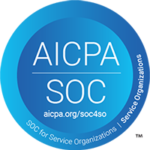Bryan’s Background
I’m fortunate to be in a profession that gives me unique opportunities to care for people and make a difference in their lives. After pharmacy school, I completed additional training in an academic hospital system, which gave me a unique perspective into the patient care journey. That led to focused work in specialty and infusion pharmacy, which inspired a whole new passion for patients in the ambulatory arena. Now at Rx Savings Solutions, I have yet another vantage point, seeing the patient experience through the lens of benefits and plan design. Each opportunity gives me a greater understanding of the impact that the healthcare system and decisions made by stakeholders have on patients.
3 Key Trends I’m Seeing
1 – Specialty Rx – Rising Spend & Utilization
This segment of therapies—often defined by its complexity and cost—continues to drive important conversations among a whole host of stakeholders: patients, providers, payers, pharmacy benefit managers (PBMs), consultants, manufacturers, wholesalers and specialty pharmacies. The reason: money.
Specialty pharmacy now represents an estimated 53% of total U.S. pharmacy spend—in 2010 that number was 27%. This trend represents an unsustainable path forward.
Nearly everyone in the healthcare world claims to have a way to lower specialty costs. But those opportunities aren’t always clearly defined—nor are they incentivized. Just a few examples:
- Generic specialty medications may offer 95% savings over name-brand options. But plan designs might include the brand product due to large rebates, or if the generic is priced at a much higher cost in a restricted fulfillment channel.
- Patients may choose to remain on a higher-priced medication and use a copay card to pay toward their deductible.
- Pharmacies may choose to fill a brand medication to gain a better margin.
All these scenarios lead to increased spend for plan sponsors—and often their members, too. Stronger competition can put downward pressure on pricing, but incentivizing market behavior that lowers plan costs is key to reversing this trend.
2 – Why Site of Care Matters
Simply put, plan sponsors have seen data indicating the cost of a provider-administered infusion or injectable medication can vary based on the site of care. Typical sites of care include:
- Hospital outpatient departments
- Stand-alone physician office or infusion center
- In-home infusion
A recent study looked at 72 physician-administered outpatient drugs. It found that 70 of the 72 drugs had higher allowed charges when provided in hospital outpatient departments compared to physician offices. Trends like this have led payers to act in a few important ways:
- Some require patients to receive infusions at the lowest-cost site of care, eliminating the ability for hospital outpatient departments to facilitate those treatments.
- Many have reduced reimbursement to hospital outpatient departments to match those of other sites of care.
- Perhaps most controversial, payers are shifting some provider-administered medications from the medical benefit to the pharmacy benefit. This process—known as “white-bagging”—locks these medications into a specific specialty pharmacy, most often associated with the PBM, and separates the drug billing and distribution from the provider.
Actions like these have led to pushback, both from providers and state legislatures. In the end, patients and payers want the best health outcomes for their money, so having transparency into both quality and cost seems like the right place to start.
3 – What’s Next for Biosimilars?
According to the Biosimilars Council, a biosimilar medicine is a safe, effective and less-costly biologic medicine that is highly similar to a previously approved biologic medicine currently on the market.
We’ve seen quality biosimilars hit the market, and utilization is on the rise. But as one can imagine, lower-cost options aren’t always well-received in the pharmacy marketplace. There have been 30 approvals and 20 launches of biosimilars, but some are currently held up due to litigation. The products now in the market have led to overall cost savings by offering lower price points, reducing brand price points and allowing more generous rebates.
Bryan’s Take
- Reducing specialty spend can be complex and time consuming. However, a simple first step is to ensure your organization is maximizing utilization of specialty generics. We can help you.
- When biosimilar utilization is combined with a sensible site of care strategy, the savings are there for the taking. But it takes the correct information and insight to ensure a cost-effective plan design. That’s where we come in.
- The patient journey is always changing, and as patients become more engaged healthcare consumers it will challenge everyone in the system to be transparent with their incentives and solutions.
———————————————–
Meet All Our Pharmacists
How can RxSS find so many ways to save on prescriptions? First, we find smart pharmacists. Learn all about our Pharmacy and Therapeutics (P&T) Committee and what they do.


